Swimming With Sharks
by Awl Sponsors
https://www.youtube.com/watch?v=ZjkYZ59iICo
Pro surfer Alana Blanchard and friends Leila Hurst and Camille Brady go on a shark swimming adventure off the coast of Oahu, Hawaii. Like this video? Watch more here.
The Columnist's Vacation
The Columnist’s Vacation

Before I begin the next episode of the Mr. Wrong column, which is on Vacation, topicwise, and simultaneously “on vacation,” I want to remind all you Gentle Readers that this is a column. According to the Collins English Dictionary, which was the first thing I found on the Internet when I Googled “History of the word column” at it, a column is — in the number five (b) slot of meanings of the word “column” — supposed to be:
5.
journalism
a. any of two or more vertical sections of type on a printed page, esp on a newspaper page
b. a regular article or feature in a paper: the fashion column
The Mr. Wrong column is journalism, har! And not in “quotes”! It’s not a blog or a tumblr, or a Tweeter, or any of that stuff , and I take it very seriously, columning. In further support of the above definition example, I even columned a Fashion column last week, about socks. Fashion! I probably won’t be doing too many more of those, though. But I would like to thank everyone who sent in tips to my wrongcolumn@gmail.com email address with respect to what kind of socks I should buy.
Look, the one major primary distinguishing characteristic-thing about a column is it is supposed to be regular, you know? This column started on newspaper-print, and those things used to come out on the regular, so here on the Internet, I strive to “file” my column that way, OK? Regular! I’m just saying sometimes they (The Awl) take a day off, like Presidents Day, which I wrote about in a The Mr. Wrong column a while back that I put up on Twitter because The Awl was on a holiday break, so they Did Not Want, which is fine, but just because a thing is Vacant doesn’t mean my column is, you know? What? So I file the Mr. Wrong column on the regular, whether they want it or not! And that goes double for you! So look, until it gets fired, or The Awl figures out a better way to block it besides being “on vacation” and then trying to change their address so I can’t find it, right now the Mr. Wrong column goes on the pixels of The Awl on Mondays, but if you don’t see it there, it’s not because I didn’t poop one out, OK? Time and Space are meaningless on the Internet. I’ve columned it before and I’ll column it again: ABC! Always Be Columning!

So right now, if you are reading this column before March 7, 2013, I am still on my well-deserved Vacation in sunny Florida, which is where they invented the whole idea of FLORIDA MAN, because Florida is America, and so right now I am FLORIDA MAN. My vacation schedule in Florida is tentative and Subject to Change Without Notice, but right now it includes eating a Fried Grouper sandwich, drinking an undetermined quantity of Yago Sangria®, and long walks on the beach. Plus I am probably gonna go to a buncha thrift stores and not just because I can’t get this fucking song out of my head. So in preparation for this, my Vacation, I wrote my column (which is about being on Vacation) before I was vacant, and then it gets filed in my vacancy, and no one’s the wiser, especially me!
Futhermore, and nota bene, I put “I’ve columned it before” because of the thing about this guy who plagiarized his blog or whatever and got in trouble. I copy myself all the time, but I like to think of it as repeating myself, so it’s not plagiarizing, it’s more like being Annoying and saying the same stuff over and over and overandover again, because I mean it, just like when I complain about my column.
The Mr. Wrong Column will be back next week, but you won’t notice the difference.
Previously: The Menace of Men’s Socks
Mr. Wrong can converse with you via many medias.
Let's Make Cigarettes As Boring As Everything Else
“The law calls on the F.D.A. to apply public health criteria — ‘the risks and benefits to the population as a whole’ — in designing its regulations. It also encourages the F.D.A. to create tobacco standards that will help existing users stop smoking and decrease the risk that nonsmokers will start. The F.D.A. would be well within its authority to require nicotine content to be below addictive levels — an idea that originated with a 1994 article in The New England Journal of Medicine urging a nonaddictive nicotine standard.”
— But you would still look cool, right?
New York City, March 3, 2013

★★★ Neither the sunshine nor the cold was in any hurry to assert itself. The light faded in from behind thin clouds, and the air was calm. The big parka had not come up from the storage cage all winter, and now it seemed likely it never would. By late morning, objects had gone from not casting shadows to casting clear but faint ones. The streets were quiet and nearly empty, and the thin illumination from the glaring southern sky drew out odd eggplant tones in the dark-gray bricks on the back side of Trumpville. Things kept brightening and shadows kept darkening. By late afternoon, the sun was bouncing around again, poking through windows to discover a chair or a white duvet, as if it had been there all along.
That Giant Albino Snake All Children Love Is a She, Not a He

“An article on Feb. 17 about a decline in field trips for students because of the New York City school bus drivers’ strike referred incorrectly to the 280-pound albino Burmese python at the Brooklyn Children’s Museum. The python, a favorite of schoolchildren, is a ‘she’ (Fantasia), not a ‘he.’”
— The NYT is taking this accountability thing very seriously, when it comes to enormous albino zoo animals that are a favorite of children.
Photo by edenpictures.
Real Cost Of Sequester Already Being Felt By People Who Actually Matter

“US airports, including Los Angeles International and O’Hare International in Chicago, are already experiencing delays as a result of automatic federal spending cuts, Homeland Security Secretary Janet Napolitano said Monday…. Napolitano said she expects a cascading effect during the week, with wait times expected to double in worst cases.”
— Insert your own “how could they tell?” joke here.
Photo by Paul Prescott, via Shutterstock
A Fan's Notes On "Gilmore Girls"
A Fan’s Notes On “Gilmore Girls”
by Jane Hu
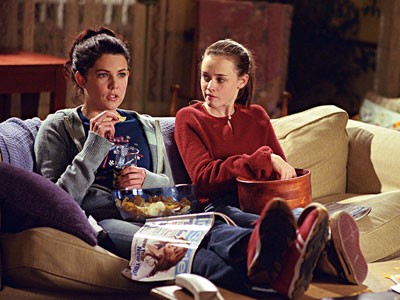
Each television show will inevitably teach you something, but together they’ve all taught me one thing — that is, a television show will always teach you how to watch it. The education starts early: “Barney” or “Sesame Street,” where learning to count is the same thing as learning how to learn to count. You might not realize it when you’re eight and miming the clean-up dance on “Big Comfy Couch,” but then the education continues. “Mad Men,” that excellent serial drama, directs us to observe details, little gestures, big paintings — all meaningful subtext. Even shows fairly awful at teaching you how to watch them, like “Homeland” or “Smash,” manage to convey something (don’t trust anyone, especially not us). My motto for shows such as these is “Don’t Overthink It” — it works! But I want to talk about the first show — if not the show — that taught me how to read television.
Amy Sherman-Palladino’s “Gilmore Girls” premiered in the fall of 2000, becoming the first (non-after-school, non-weekend-morning) show that I watched regularly: Thursday nights on the WB — faithfully, even if friends were over. “You’ll like it!” I insisted eagerly, in that annoyingly desperate manner I’ve yet to shake when it comes to the art of recommendations. And then, succumbing, they’d sit down to watch only to be assaulted by more fast talking, more zany hand-motions, this time emanating from the people on the screen. “Oi with the poodles!!” Lorelai and I chimed for the zillionth time (I exaggerate, but that too is the Gilmore style). My friend might ask if I could lower my voice. We were all growing up, in our way.
This essay is part of a series about our favorite TV shows past.
Previously: The Before And After Of “Monty Python’s Flying Circus”
If “Gilmore Girls” is a text, then it’s a big, fat one — in fact, double that of most evening television dramas — with heaps of knowledge to dispense. While most screenwriters adhered to the page-a-minute standard, Sherman-Palladino’s notorious ‘fast talking’ was written so that each page translated to about 20 to 25 seconds of screen time. The patter expanded so much that “Gilmore Girls,” like “The West Wing,” had to hire speech coaches to help actors through dialogue, as well as watch tapings for dropped words. (It appeared to me that one reason I spoke so loudly when was watching it was because that seemed the only way to get out all the words.) What’s more, the already capacious text overflowed with even more intertext and metatext. I didn’t entirely understand this at the time — the sheer amount of gabbing mostly worked to signal enthusiasm — but I didn’t really need to. This is the kind of television pedagogy that keeps giving. When “Gilmore Girls” re-runs started airing, I watched intently, picking up each time on a few more layers of allusion — those famous pop-culture references — previously missed the first time around.
Being an obsessive re-reader, as children often are, I wonder how much “Gilmore Girls” taught me about the rewards of continuing to be one. Lorelai and Rory were avid re-watchers themselves (the movie version of Pippi Longstocking is a “lifestyle”), as well as voracious readers and eaters: the amount of junk food consumed was always exaggerated, always enormous. And remember when we learn that Jess has read “Howl” “about 40 times”? (This is, by the way, the moment you’re supposed to fall in love with him.) In high school, I began to collect the DVDs of the show, and throughout my college years, each viewing meant more references no longer passing unappreciated. Never did it become a game or contest, though, and rightly so for no names were ever dropped in “Gilmore Girls” for the sake of one-upmanship — they were part of the fabric of the characters’ lives, which amounted to be the same, for viewers, as their dialogue. It was all so casual — knowledge of Edith Wharton’s flair for design, iconic John Hughes scenes, the opening to Moby-Dick, or the opening voiceover to “Days of Our Lives” (a combination of these four could also be used to describe “Gilmore Girls”). Those were some of the more recognizable sources, but they also get as obscure as The Thing From Another World and “Hee Haw.” (The most recent episode of Sherman-Palladino’s latest show “Bunheads” included, among others, references to Bell, Book and Candle, A Chorus Line, Judy Blume, and a hilarious transition from Tolstoy to Pussy Riot.) Sherman-Palladino’s encyclopedic script seemed endless and, in a way, it is. Dig deeper. There’s always more there. The dialogue of “Gilmore Girls” was a fantasy, but it was a fantasy that presented a deliciously tempting premise: what would it mean to know so many, and so many different, things?
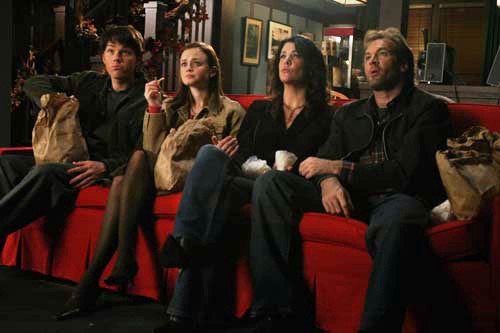
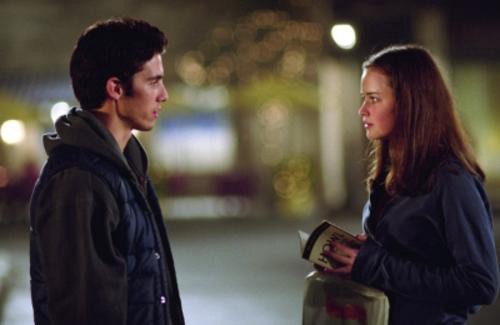
So one thrill of watching “Gilmore Girls” — apart from Miss Patty’s dance rehearsals or watching Lorelai and Rory adjust to Emily in their intergenerational bonding or deciding if you were Team Dean, Team Jess, or, goodness forbid, Team Logan (poor Marty) — comes not from registering the breadth of the characters’ cultural knowledge, but in their ability to weave the high and the low — obscure cinema and popular culture — together. While I would never suggest that a balance of high-low translates to any kind of middle or middlebrow ground (the characters on “Gilmore Girls” come with all the impossible privilege of knowing so very much), the show is still the clearest attempt at a democratization of culture I’ve yet encountered. At any point, we might find ourselves acknowledging the soapy excesses of melodrama (musicals and Streisand-driven projects ran aplenty), or the show could switch and decide that Art Brut, “South Park,” or Balzac was more its taste. Oh, and taste — what did it mean in the show, if not that anything might contribute to it? “Gilmore Girls” itself aired on the WB — it was by no means HBO; it was definitely television — but its contents spilled across media, aesthetic eras, and the zeitgeisty artifacts of nostalgic pasts. Really, I’m surprised no one on the show played an archeologist. Unless that role was already being prescribed to the viewer, and if so, we were able to assume it at whatever degree we desired or could. It’s similar to the role a viewer takes on when watching “Community,” a show that teaches the viewer how to watch it on an episode-by-episode basis.
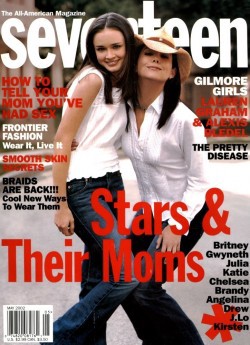
“Gilmore Girls” suggests that high art and pop culture don’t need to reside so far apart from one another. In a way, the show seems the inverse to academic cultural studies, which uses so-called high theory to read low culture, stuffing texts like “The Hills” and Taylor Swift lyrics with questions posed by Adorno and Latour. (What is the ecology of “The Hills”? Will someone please write about this?) In another way, cultural studies appears in exact keeping with “Gilmore Girls,” as it tests the line between serious art and entertainment, the avant-garde and the popular. As a writer and a reader, my fantasy is to work in a world where the Harlequin romance, a NYBR classics release, and so-called academic prose all deserve re-readings — because they can all be read seriously, each one being worth serious attention.
And so this is what I took from “Gilmore Girls”: That it was okay, nay natural, to love Stephen Sondheim and Eve K. Sedgwick, and to want to exclaim about both in a loud, enthusiastic voice, maybe even without taking a breath in between. This was part of the joys of excess I learned from the show.
To span these varying interests might make for a zany palette, but it also bears its own kind of consistency — all my cultural obsessions are fat in a similar way, stuffed from all directions. Like “Gilmore Girls,” they’re texts interested in excess — in combining what might seem too much, too much to clash — if not excessive in themselves. From my favorite academic writing (mostly, that interested in popular culture) to the musicals of Stephen Sondheim (that “avant-garde artist working in the populist art form”) or the novels of Graham Greene and Dorothy Sayers (have you read her thriller Whose Body? There are some playful Woolf references there), they all work to combine seemingly conflicting categories. They are objects that require rereading and that resist categorization themselves. They are texts that want to have it both ways.
Sherman-Palladino has mentioned Katharine Hepburn-Spencer Tracy films as inspiration for her dialogue, and while the banter of films such as Adam’s Rib and Pat and Mike certainly bear resemblance to conversations in “Gilmore Girls,” the show seems more generally symptomatic of that entire genre of talkies. Howard Hawks’ film His Girl Friday is notably referenced multiple times in the series, as is the television show “I Love Lucy,” whose heroine Lucy Ricardo, bears more than a little resemblance to Lorelai’s slapstick demeanor. But besides the more exaggerated physical comedy of “Gilmore Girls,” its dialogue is what bears the greatest imprints of the show’s 50s influences. If you’ve watched Alexis Bledel on screen since her period as Rory Gilmore, you might be disappointed by the fact that she appears somewhat deflated, not quite as bright as you remember her. I suspect this is partly because, in “Gilmore Girls,” exposition, character development, and plot moved for the most part through conversations, rather than from acting. The show never rests on monologues, the internal thoughts of one character, unless in a performance of rambling monologue before another person (Lorelai and Rory frequently rant at one another), but even then the acting is emphasized as acting. Banter gets viewers from one place to another without giving them much time to consider how, and to stuff banter with references that branch away from the topic at hand cuts their contemplation time down even more. While some dialogue teaches us to move through the world by conveying much while saying little, “Gilmore Girls” showed me how to convey much by saying much around the thing that one is trying to talk about while never actually stopping on the exact thing one is conveying much about. Henry James also taught me lots about how to do this. We’ve been here before; I recognize that tree.
Previously in series: The Before And After Of “Monty Python’s Flying Circus”
Let's Make the Sequester the SEA QUESTER!
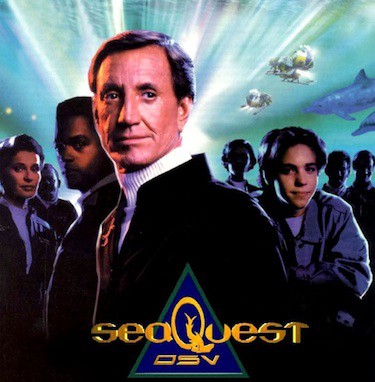
So this fiscal cliff thing, whatever it is, seems pretty bad. Or maybe it’s not that big a deal? Will it last forever? Is it “in the Constitution” or just a Politico scam? Is it Obama’s fault, or are liberals to blame? The problem is that sequester is jargon garbage that means nothing to anyone outside of newsrooms and the U.S. Capitol, which should just have iron bars put in all the windows and doorways and be renamed Ronald Reagan Federal Penitentiary.
What’s happening is nothing less than a partial-birth shutdown of the United States. It is the fault of Tea Party Kochbats in Congress who are, if I’m reading the Constitution correctly, committing terrorism — “treason,” in old-timey Constitution framers’ talk — against the American People, especially old white people on Social Security who vote Republican, despite all evidence suggesting they are voting against their own interests. The best way to illustrate this sequester concept during the next few days before it resolves is to bring back the classic undersea adventure show “SeaQuest,” which had Bob Fosse as the Old Sea Captain and a dolphin wearing a parka as “Ensign Dolphin.” Even a Fox News viewer can say “Sea Quest” correctly, with some practice. Let’s make this happen, Hollywood! The nation needs the entertainment industry like never before.
Terrifyingly Cheerful Ghost Revealed To Be Free iPad App Notification

The first time you hear a very clear Chinese woman’s voice say “Sou Sou!” in your living room while you are supposedly alone, it is natural to brush it off. There are so many things making noises all the time! The second time, weeks later, when you’re sitting alone by the fireplace reading at midnight, is terrifying. At this point, it is natural to wonder if this is how Moses or Allah or Jesus or Neale Donald Walsch or Oral Roberts or Ted Nugent or Charles Manson felt, when they first heard voices telling them what to do. But what did “Sou Sou!” even mean? It seemed less like a command to, say, begin training as a sous chef than the random gibberish of an alien monstrosity.
It took a half-hour of searching every conceivable variation of “Sou Sou!” plus “iPad talking to me” and “Help! My iPad is possessed” until I finally found the answer and a sense of palpable relief.
Another human out there had also been tortured by the mysterious voice, and posted this on iPadForums.net last summer:
Weird sound
My ipad gives me a weird sound literally like human voice “sou-sou” without any notification or banner appear…
Approx at the same time for few days…
Please help if someone knows what is that and to turn that off !
The first reply was not comforting: “That would scare me at night. Better have it checked at the Apple store before it becomes worse.”
Ha ha, yes, because now there are exorcists working the Genius Bar.
The answer did arrive, just a day after the first terrified question. The “Sou Sou!” or “sou-sou” sound is a notification from a horrible free game your kids downloaded. In this case, the game is called The Sims FreePlay.
You must go to Notifications in your iPad’s Settings and manually turn off sounds and badges. If you did this when your evil children first got this App, because of course you turn off all Notifications whenever you put something on your tablet device, do it again. New versions apparently go back to the default of having a terrifyingly chipper Asian woman’s voice cry “Sou Sou!” in the middle of the night when nobody is anywhere around the iPad.
Anecdotal evidence suggests this is one of America’s major problems right now:
@kenlayne Jeesusgawd and here I thought our house was the only one possessed by the SOU SOUs.
— Debbie Cortez Lopez (@valleydoll) March 4, 2013
Now that there’s no pope, we’re going to have to take care of most of this stuff on our own now.
I Was A Teenaged Anchorman
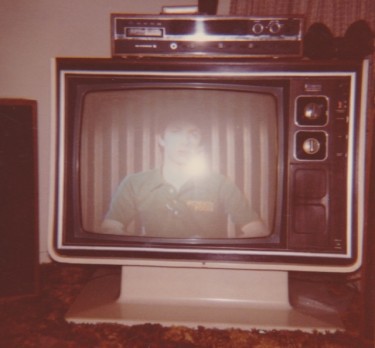
It was a supply closet off the main classroom, six feet across, with the only wall decoration being a length of pine board with a row of nails sticking out. Because of the terrible noise inside, the door was always shut. The two machines, industrial-era things that clamored and shook, spewed out a steady stream of hurt and lies and death. On this San Diego afternoon I was in the little room with my coffee, going through the accumulated Associated Press and UPI news that had cranked out of the wire machines during lunch and whatever regular classes I might have attended that day. Local stories, national and international bulletins, weather, sports, all by teletype, all through the thick bundles of wires from New York or Washington or Moscow to these billows of teletype paper on the floor. I scanned, ripped, and stuck the individual articles on the appropriate nail. When the spikes could hold no more, the entire bundle went into the trash. News is disposable, but the wire editor keeps a little bit of each story in memory, because it is that context and shallow-but-far reaching knowledge that lets the editor know what matters.
The machines started ringing in a way I’d never heard before, first the AP wire and then the smaller unit from United Press. Five bells meant something big. I watched the urgent bulletin type out the headline and first terse sentence: John Belushi — the comedy god of high school and college — was dead of an apparent heart attack. In this noisy closet, on March 5 of 1982, I began a crippling lifelong addiction to breaking news.
Because the broadcast I produced and hosted aired just once a week, on the Cox Cable educational channel, there wasn’t anything to do with this news but wander around the high school telling anyone who might care. It was still a week away from the speedball announcement — when the coroner and police said that Belushi was shot up with a fatal combination of cocaine and heroin after a night of heavy drinking — but people like John Belushi didn’t die at age 33 from natural causes. And if you were 16 years old and loved comedy and music, Belushi had been there to teach you about punk rock and R&B and Richard Nixon and college. The Blues Brothers was still playing in a couple of run-down mall theaters, and Animal House was already a staple on HBO. That Belushi had portrayed a Mike Royko-style Chicago newspaper columnist in his last movie, Continental Divide, only made him more essential to my particular set of interests.
Until that point, the “broadcast” part of the journalism world was just something I dabbled in because I could capably do it. The good stuff was writing for a newspaper. The great Mike Royko was syndicated in the same local evening paper that bought my prep sports reports — sports were meaningless to me but that’s all the Evening Tribune wanted from San Diego High School — and syndicated newspaper columnists were still important enough in the 1980s that Royko’s disgust over sushi being sold at San Diego’s baseball stadium was enough to cause a citywide uproar. But that clanging moment in the wire room caused me to reevaluate. Maybe broadcast news really was the future. The local NBC station had an intern program, and for a few short weeks before they figured out I wasn’t in college, I was an unpaid newsroom and studio intern at KSCT-TV for “Newscenter 39.”
https://www.youtube.com/watch?v=mYswrDXOGvQ
After school, I drove to the NBC affiliate’s station that was, like most things in San Diego, in a commercial stretch of a suburb between a triangle of freeways. Always in my tie and jacket, I passed unnoticed through reception to the set, which used the working newsroom for transitions from the anchor desk to commercials. Because the news was written and produced before the 5 o’clock broadcast began, the people at the desks answering the phones and pretending to type were the makeup woman, the mobile cameraman on late duty and me. I also fed scripts into the teleprompter, brought around coffee, and occasionally got sent to the anchorman’s office to knock on his door when the newscast was about to go live. Sometimes he just did not want to come out of there. He was the main “talent” on the show, young and at the top of his game, and he did not display much respect for his inferiors. His name was Paul Bloom, longtime San Diego anchorman and a prime inspiration for Will Ferrell’s Anchorman.
The vanity, the pride, the mustache, the sense that he was in charge of San Diego itself — all of this was apparent in my few weeks of watching Bloom at work. But unlike the Will Ferrell character, Paul Bloom was smarter than anyone else in the room. Of the local news anchors, he was my favorite, and I had already stolen his signature bit — closing the newscast with a brief deadpan description of some idiocy or absurdity — for my weekly education news show. But he was vicious, too, and the time of great tension on “Newscenter 39” was when he would calmly mutter an insult to his co-anchor, a woman he obviously despised, because of something she flubbed on-air. Sometimes I could hear him, when I was working the teleprompter, but usually the savagery of his remark could only be gauged by the look of dull fury on her face. And then they would turn on the smiles when the floor director finished his countdown back to live television.
I don’t know who was or who wasn’t using cocaine all the time, but as Belushi’s death showed it was everywhere in the entertainment and media realms of the late 1970s and early 1980s. Anyone’s bad behavior in this television newsroom was ridiculed as “coke nerves,” and in this hostile local-news environment where backstabbing and cruel asides were commonplace, anchors and on-air reporters from this or competing stations were routinely characterized as being total cocaine addicts. Cokeheads or not, the people were usually polite to me, but it wasn’t a fun place to work. When the producer in charge of interns got around to formalizing my position and realized I was still in high school, my fledgling internship was immediately terminated.
“I thought you were from San Diego City College,” she told me. “Why did you tell us you were in college?”
“I didn’t,” I said. “I was recommended by San Diego High School, from the broadcast journalism department.”
“You know you have to be 18 to be an intern here,” she said. Of course I did not know this — why would I be driving to this television station every day to work without pay for a bunch of sociopathic San Diego coke fiends if I wasn’t even eligible for their internship?
***
By the end of 1982, I had lost all interest in broadcast news. Despite it being the reason for my participation in the San Diego Unified School District’s magnet program to draw white kids to downtown and the barrio, I quit anchoring and writing “Action Focus News” and dedicated the final semester of high school to the student newspaper — I was also editor of this neglected hundred-year-old institution, called The Russ after the original name of this first high school in San Diego. It was starved for cash while the TV classes were equipped with a $300,000 broadcast and production facility. We made do with manual typewriters, and I drove 20 miles across town to the absolute cheapest typesetter, run by a couple of aging hippies in La Mesa who shared and encouraged my love for the counterculture comedians and underground press I’d learned about through the filter of National Lampoon and the original “Saturday Night Live.”
The underground press was mostly a rumor by the 1980s; punk rock fanzines were all that was left of a scene that had produced the Los Angeles Free Press and The Realist in the 1960s and the Village Voice in the 1950s. I had already been called to the principal’s office for running anti-draft ads in The Russ. The ad warned seniors that they could be forced into fighting Ronald Reagan’s Central American wars if they registered for the Selective Service, which Jimmy Carter had reinstated in 1980 after the Soviets invaded Afghanistan. America eventually found some locals to do the proxy fighting in Afghanistan, which crippled the USSR and generally worked pretty well until September 11 of 2001. But in the early 1980s the threat of a draft was very real. The principal didn’t care if I turned down the Army recruiting full-page ads that targeted the mostly Latino students, but encouraging people to resist Selective Service registration was supposedly a federal crime.
The only thing standing between me and publishing my own underground paper was a story. The draft issue was too obvious. Then my good friend Sam appeared in the Russ newsroom waving a few typed pages and all worked up about a meeting with this same principal, over some deficiencies in the college-prep classes and the barrio school’s apparent neglect of the college bound. This was meaningless to me, because my working-class family had never brought up college and I had neglected to even take the SATs. Sam insisted that it was a major problem and that it was way too hot for the school newspaper.
“Fine,” I said. “Let’s make an underground paper. We’ll call it the — “
“The Underground Russ,” Sam said. He later turned out to be an excellent namer of things, as proprietor of San Diego’s Whistle Stop, Station Tavern and Riviera Supper Club, but Underground Russ did not exactly dance off the tongue. Most kids at the school didn’t even realize the student paper was called The Russ, both because of the heavily stylized 1970s Star Wars-font masthead and the sad fact that few of the students would read anything they didn’t have to.
I took the copy to my hippie friends and asked them to typeset a single-page tabloid along with a doctored masthead that cleverly had the word “UNDERGROUND” in stencil font over the already clunky The Russ logo. It was hideous. As for the cost, I just had them bill the school for the $60 worth of time on the Linotype phototypesetter and a couple of hundred offset copies of the one-story issue, which had been reduced to 8.5×11 Xerox paper so we could do the printing in the little typesetting office, too. On the appointed day, we distributed the bootleg edition by leaving stacks outside each classroom. Sam decided to disguise himself as a cholo, clad in khakis and a crisp flannel buttoned only at the collar and Ray-Bans and a hairnet over his black hair. The actual cholos always walking the halls during classtime greeted him by name and asked why he was suddenly dressing cholo, which made the disguise even more ridiculous. I just walked around as usual, in my jacket and tie, and the burly adult hall monitors hired to break up gang fights on campus were all too used to seeing me everywhere but in a classroom.
There was a final obligation to the broadcast journalism department on that same day: an hour-long interview, Tom Snyder style in a in a darkened studio with two armchairs per my request, with the new superintendent of the San Diego Unified School District. We shot these things live and mimicked commercial breaks to teach the production staff about the real world of local 30-second spots, and during the last sponsor break I pulled a folded copy of the Underground Russ from the inside pocket of my sportscoat and handed it to him with gravity.
“This was published today,” I said in a deep whisper learned from watching Paul Bloom insult his co-anchors. “There appears to be a controversy around the Advanced Placement classes and the qualifications of those teaching the courses.”
He took the sheet of paper and scanned the text, nodding in concentration. As the floor director counted down, the superintendent folded the page and tucked it into his own suit pocket.
“I’ll take a look into it,” he said. “I appreciate that you didn’t surprise me with this while we were taping.”
I had considered doing exactly that, but the fact that the interview was being taped made it very unlikely the exchange would make it to Cox Cable the following Friday. I had created an illicit publication, engaged in misappropriation of education funds, handed the evidence to the man in charge of the nation’s largest school district and effectively facilitated the mainstream media cover-up. It is amazing they ever let me graduate and deliver the benediction at commencement.
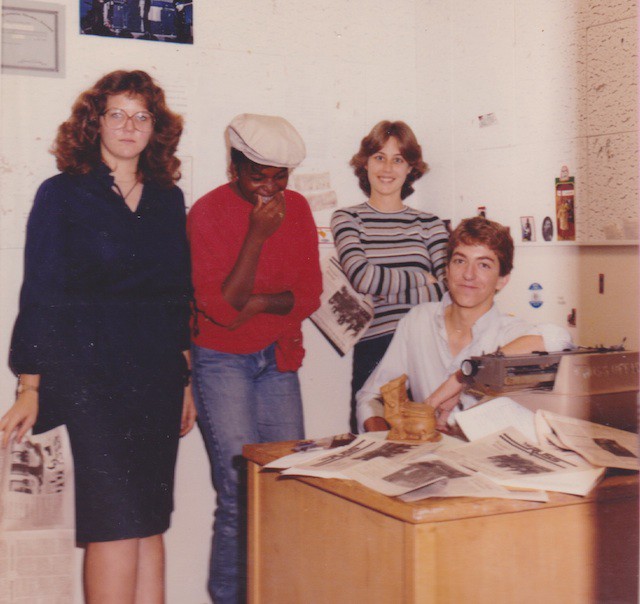
The author, seated, and his co-editors at the San Diego High School student newspaper, Spring 1983. Top photo: The author as anchor of “Action Focus News,” as seen through a typical home television set of the time, Fall 1982.
Related: How To Fail At Journalism In Exotic Foreign Lands
Ken Layne has held approximately a hundred media jobs around the world. He should’ve learned by now.
